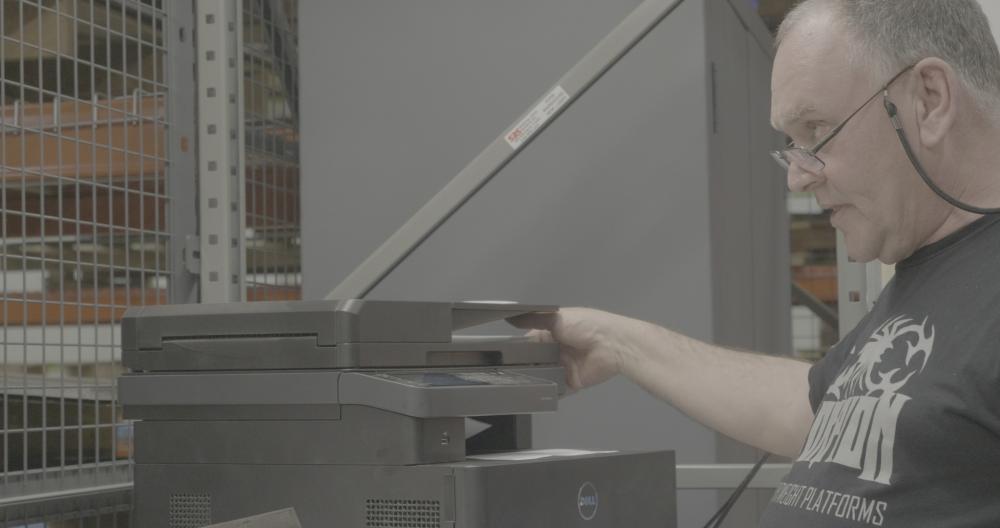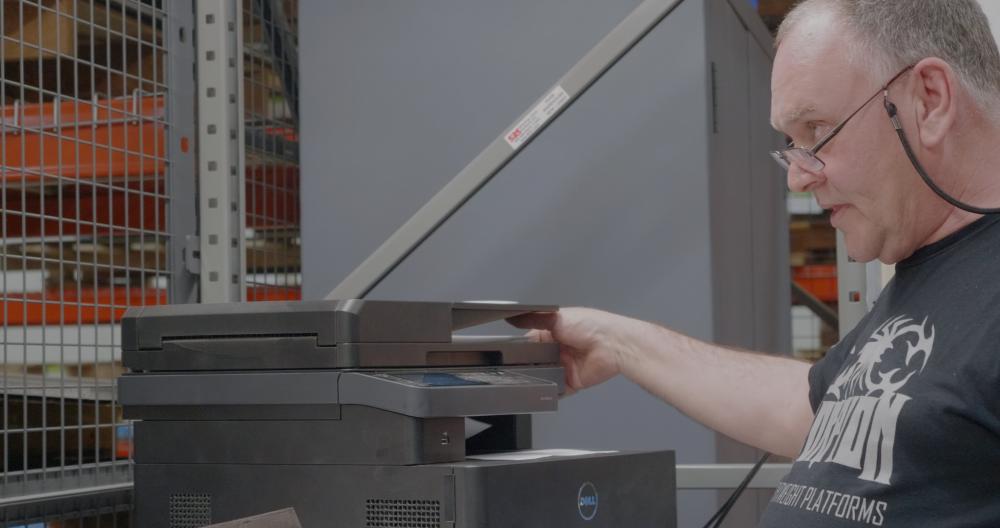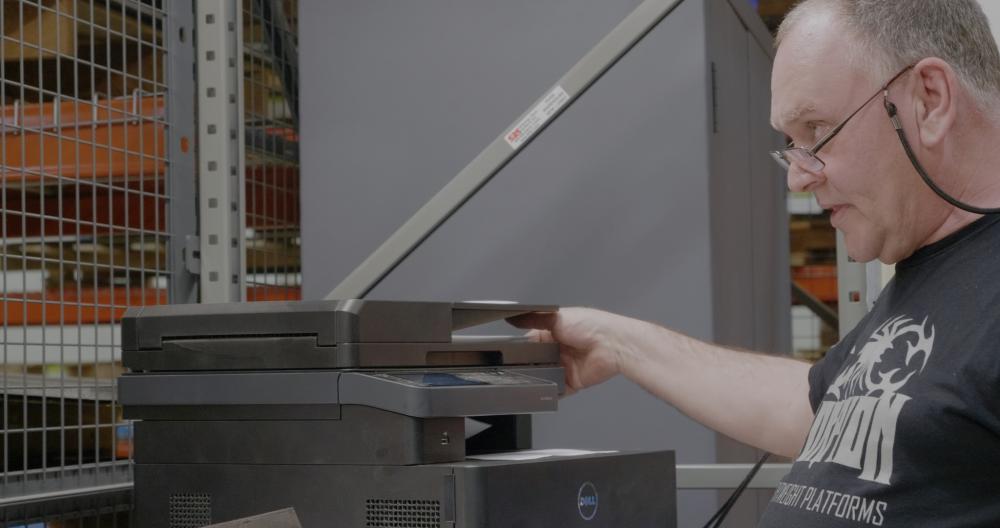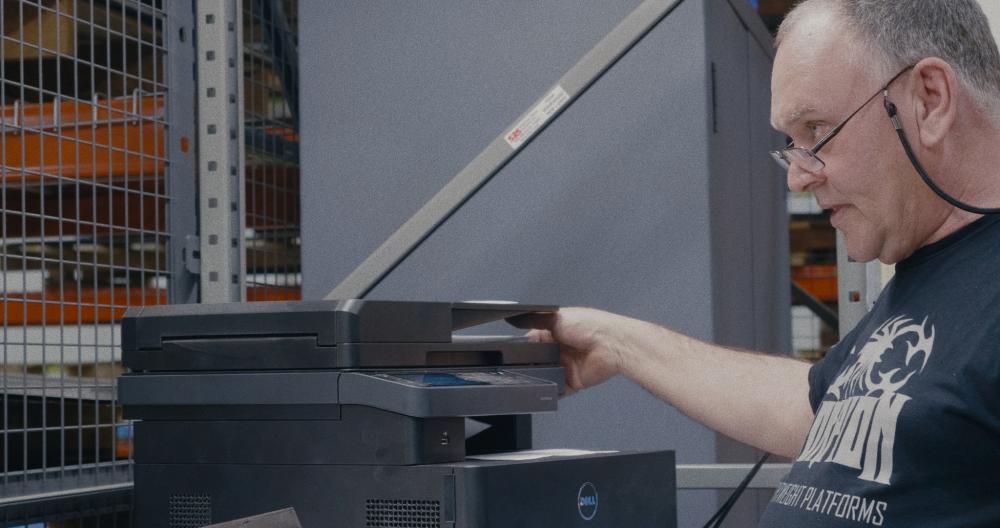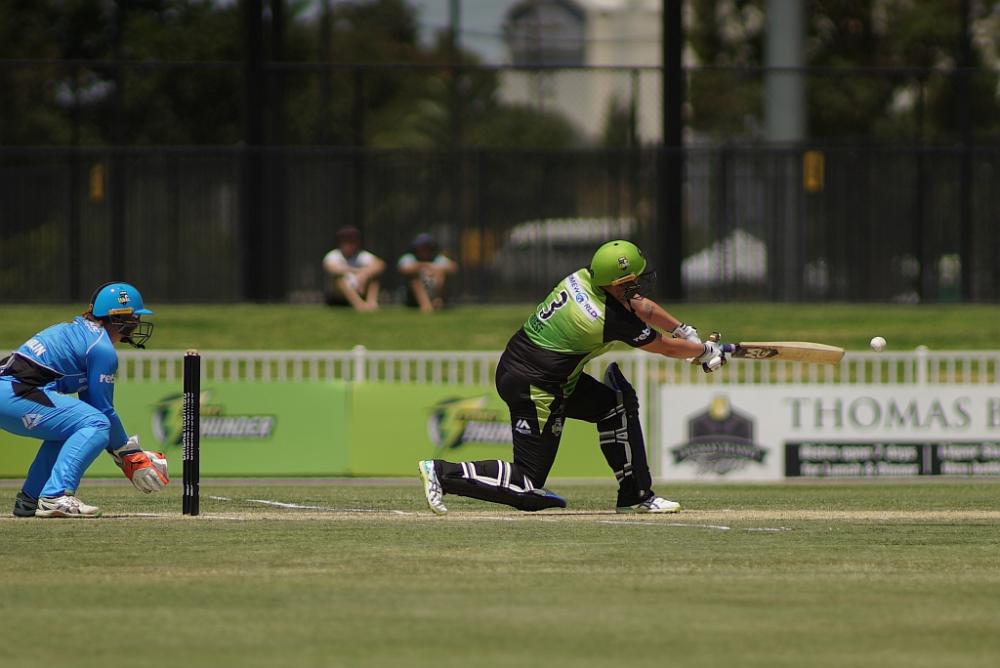Leaderboard
Popular Content
Showing content with the highest reputation on 01/23/2018 in all areas
-
it means theyre gonna fuck us again! ?5 points
-
Canon to make major mirrorless presentation in Feb
Rinad Amir and 2 others reacted to mercer for a topic
Yes but in that mirror space, they could include a hefty ibis system or internal NDs... who am I kidding... Canon won’t do either.3 points -

DJI Mavic Air
Tim Sewell and one other reacted to Parker for a topic
I'm after more of an Elven drone myself.2 points -
Please Help Me Find A Drone For My Short
IronFilm and one other reacted to Mark Romero 2 for a topic
Just remember that flying over moving vehicles or over uncovered people as seen in the videos you linked to is illegal (if you don't have a waiver from the FAA).2 points -
Canon to make major mirrorless presentation in Feb
kaylee reacted to Aussie Ash for a topic
according to "canon rumors" Canon is sending out “very elaborate” invites to select dealers and VIPs for a mirrorless camera announcement next month. The invitation was described as being very high end, printed on heavy glossy paper and showing a silhouette of a camera shaped like the EOS M6 with a hole cut out (similar diameter to a dildo)1 point -
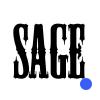
GH5 to Alexa Conversion
JeremyDulac reacted to Sage for a topic
Hey Jeremy; It can be a matter of taste, as technically there is no correct way at the moment. If above 4500, it is closer to daylight, and below, tungsten. And each tube will differ in it's spectrum, so the most fitting conversion may vary from it's proximity to one end or the other. Go with what feels most right ; )1 point -
It uses wifi signal which is a major bummer (enhanced to 4km) I prefer radio frequency much more because interference from wifi is atrocious! Otherwise it is my dream drone for sure!1 point
-

4K 60p is even possible with a hack?
Marco Tecno reacted to lucabutera for a topic
you could ask how much it costs to extract the complete firmware from a professional reverse engineering service and make a fundraiser to pay for the job! https://www.blackhat.com/us-17/training/hacking-firmware-and-hardware-software-exploitation-via-hardware-exploitation.html https://www.tarlogic.com/en/cybersecurity-services/hardware-hacking-and-reverse-engineering-services/1 point -

Atomos Ninja Star on Canon 1DX Mark II?
EthanAlexander reacted to webrunner5 for a topic
I guess he will have to buy one of those cheap wind up Kitchen Egg Timers LoL.1 point -
You are right ceteris paribus, but the bit depth statement and the visual comparison ignores the role of bitrate (that is, you have compared different bit depths for highly compressed clips (I assume)). The test posted above shows us that bitrate matters also, and that it matters more. Remove the high compression, and the difference by bit depth shrinks almost to invisibility. So you are correct, it is just that it turns out something is even more important than bit depth (they interact). That is, when you use 8 bits but do not highly compress you get much less banding. I have heard this before; I am not claiming the bitrate effect is correct other than interpreting what the poster showed (and I do not see anything wrong with his test).1 point
-

GH5 to Alexa Conversion
Adept reacted to JeremyDulac for a topic
Ok, so I have been running some tests under fluorescent lighting that I am pretty sure is somewhere around 4800-5200(not sure because it is ceiling light at work). I have some stills here with the GHa tungsten then daylight applied and I am curious what everyone thinks looks best? @Sage Do you recommend using Tungsten for fluorescent or daylight? I also attached my film print graded version. I am really liking the way the GHa lut is grading! The highlight rolloff really is fantastic.1 point -
Sony A7R III announced with 4K HDR
jonpais reacted to darrellcraig for a topic
Thanks for pointing to this Jon... maybe Sony will listen to him. Totally agree on the 5 video criticisms. Esp. the file numbering convention - it is idiotic and creates confusion and adds a bunch of extra work. I'm running both a GH5 and A7R3 and evaluating the later as I want to switch to a single system solution, but stupid things like this that could easily be dealt with in firmware make me want to stick with the GH5, which I find a pleasure to use. Trying to decide which set of tradeoffs I want to make... pretty sure I'll just deal with the A7R3 as I do 80% stills, it is way better than the A7R2 for video (with ability to customize buttons for stills or video, and a bunch more parameters in the custom settings banks). Crazily, I'm doing an a/b with lenses and the good glass isn't really that much bigger on Sony side under 100mm where I do 99% of my stills & video shooting.1 point -

Japan store advice
Francisco Rios reacted to OliKMIA for a topic
The price won't be much different than in the US for brand new stuff but the warranty might be a pain to manage later on. Some camera are also only availablre with Japanese menu... You would find better deal in China and Hong Kong. However for used stuff there are a lot of gems and Japanese people are crazy with gears, you can find 40 years old lenses brand new with packaging! The main stores are Map camera, Yodobashi Camera, and BIC in Shinjuku Used stuff: http://photojpn.org/news/2016/02/used-camera-shops-in-tokyo/1 point -
P4 is tiny 1/2.3” sensor. X4s is one inch. That's enough for sunset time if you expose carefully.1 point
-
My Son's First Video (Warning: might be offensive to most people).
jonpais reacted to Mark Romero 2 for a topic
Meaning... spend less time on camera forums???1 point -
I am back to HDR, with HLG. First, the workflow in Resolve (free!) is easy: Import your HLG clips as you would any clips. In Project Settings, choose the "Color Management" pane and select DaVinci Resolve YRGB Color Managed as the Color Science. Choose Rec. 2100 HLG as the Input Color Space if you shot in HLG, and Rec. 2100 HLG as the Timeline Color Space. Choose Rec.2100 HLG as the Output Color Space. Place the HLG clips on the timeline and edit (and grade if you want). Export using the QuickTime container with a Google-supported codec. I use DNxHR HQX 10bit. Upon rendering DaVinci automatically includes the metadata needed by YouTube for it to know that your video is HLG. I think this is also true for the free version. That's it (the rest, the important things like editing, are normal). For the paid version, there is HDR mode for editing which provides tools (like scopes) especially for HDR editing. So, this is what I did for my 4K HLG test clips. Here is the 4K HLG video (totally boring). If you do not have an HLG enabled TV, you will see this in SDR as transformed by YouTube (looks ok). If you have an HLG-enabled TV the video should go into HLG automatically and you should get an HLG logo. Maybe this will work, maybe not! And, one can use the Atomos Shogun Inferno as an HDR monitor (7"!), using HDMI (with the appropriate graphics card). You can select whether the input is HLG or PQ, very easy.1 point
-
Well Canon already beat Sony on Mirrorless sales with lame arse attempt, why would they need to move their arse this time?1 point
-

Some Guidance Please...
webrunner5 reacted to Juxx989 for a topic
@IronFilm Ok that FS7 test video has convinced me I've watched it like 6 times.1 point -
Just light all of outside well and you'll be golden. (this is why it is best to shoot outside at golden hour, then pull down the exposure a little to simulate night best you can)1 point
-
Good news: the new Panasonic GH5S will be the first stills camera ever to accept Line in.1 point
-
I'll prepare now your back's eulogy. Have shot a fair amount with a RED ONE (which is kinda similar ish size), and OUCH You'll need a very very big gimbal indeed! Basically of the ones I listed, the only "small" cameras are: GH5S/EVA1/Terra. The rest of them you'll need to take a totally different approach to how you'd do it with a NX1. Note I said GH5S, not GH5 Really?! I reckon Varicam perhaps has the "best" image right now. (and EVA1/GH5S is somewhat inspired by that) Maybe you haven't watched enough camera tests of them? Here you go, watch this: Anywho..... a bit more seriously, I think their image gets a bit underrated. Look into the LC709A LUT, and hang out on dvxuser (because the F5, and even FS7, only very rarely gets discussed here as EOSHD is a different market niche) before making a final decision on Sony. http://www.dvxuser.com/V6/forumdisplay.php?219-PMW-Cameras-(-amp-temp-FS7-FS5) http://www.hingsberg.com/2014/06/f55-matches-arri-alexas-color/ https://www.sony.fi/pro/support/attachment/1237494271390/1237494271399/sony-look-profiles-summary.pdf https://www.provideocoalition.com/lutcalc-trials-and-errors-plus-a-free-lut/ https://cameramanben.github.io/LUTCalc/1 point
-

Sony A7R III announced with 4K HDR
Emanuel reacted to Matthew Hartman for a topic
I'll have to check those out sometime. Soft focus can be used as a narrative as much as anything else. I really like when talent moves into the plane of focus especially when it's shallow. It has it's purposes and can even make accidents look intentional. ?1 point -

Sony A7R III announced with 4K HDR
Emanuel reacted to Matthew Hartman for a topic
A lot of tech companies make extraneous claims about their own products. Sometimes the self awarding is warranted but that's the rare exception. And are you sure that's not the perception you've prescribed to them? No camera manufacturer can meet every demand of every person. What one camera lacks, the other presents, but lacks 2 features of the next one and so on. At all price points. The Alexa is often considered the litmus for other systems to measure up to as far as image. But is the Alexa a perfect camera? Not even close if the perfect camera to you is something you can hold in the palm of your hand and place anywhere. If you're happy with the image of the GH5/s, learn to manual focus like a seasoned Hollywood focus puller. Hollywood goes to considerable lengths to acheive the image they want around tons of limitations and obstacles, but they still manage to get things done and give us stories we want to pay $20 to go see. They don't pay much attention to the marketing campaigns of camera manufactures because most of it is b.s.1 point -

Sony A7R III announced with 4K HDR
Emanuel reacted to Matthew Hartman for a topic
Sounds very logical. When I worked at Microsoft, you'd be suprised how often tech companies sabotage their competitors and even themselves. Very, very politicial. Teams of various products competing constantly for budgets/headcount, and a lot of ppl being thrown under bus. The net value is the consumer receives the crap shoot of this, and marketing teams have to scramble to make somethiing out of nothing. Most of my job there was fighting to keep my job.1 point -

Sony A7R III announced with 4K HDR
Emanuel reacted to Matthew Hartman for a topic
Wha? I'm not "looking down" per se on anything. I just don't prefer Panasonic when it comes to the character of their image, it looks "flat" or "thin" to me regardless of resolution or bit rate I view it at. Obviously, there are others who like or even love it, which is super for them. No hate here. Each to their own. My guess about YT's compression algorithm is a doubt, not anything prescriptive. I don't work for Google so of course I couldnt tell you their future intentions. I based my doubt off of what we've seen in the past and today. As of today, 8bit is still the distribution standard. If that changes, great! Right? My "arguement" was actually in support of not looking down on 8bit rather than turning up my nose to it. Also, to get away from at size perceptible banding you really need to be at least 10bit, but more realistically in a 16bit + colorspace. I think there's a buzzword when it comes to 10bit right now and a misconception that 10bit means no banding. I've been a designer for over 25 years, that's simply wrong. If we're being rententively honest, you'd have to be in a 32bit/float colorspace to get zero artifacts/stepping, as far as pixel peeping in concerned. But ppl don't watch content at a 500% crop, unless they're anally retentive, so does it even matter? Maybe I didn't articulate this well, but basically dont worry about it. Banding, it's there, even if you cant see it at 100%, and a reality for most of us, just concentrate on making good content instead, because that's what will determine the success of it the most. The video you linked is very impressive on my 10bit BenQ 2.5k monitor. I never said YOU were demonizing anything. I don't think we're actually opposing one another here.1 point -

Your Nikon mirrorless wishes
webrunner5 reacted to EthanAlexander for a topic
You're right @noone - Clear Image is way different than just punching in. Sony actually has an algorithm that "looks" at what you're shooting and intelligently creates new pixels. It's one of my favorite features on the FS5. My primes are suddenly variable zooms that I can control with the zoom rocker.1 point -

Your Nikon mirrorless wishes
webrunner5 reacted to noone for a topic
This is different to just having DX mode. I agree about Canon and APSC lenses (which work on Sony FF and M43 cameras with adapters easier than Canon FF DSLRs). I don't understand why Sony seems to be the only one who has digital zoom as being variable. The FF Sony's have APSC and FF modes and also use variable digital zoom (either to 2x as Clear image zoom which is excellent or as normal digital zoom which is not so great over 2x but still better than nothing). Panasonic ETC is great but it is frustrating to me that it isn't variable. It isn't available for RAW stills but for Jpegs works well and the same for video. ( I also don't understand why more people don't use it for video). At the cricket over the weekend, 300mm 2.8 was not anywhere close to long enough for me and while I had a real 2x converter with me, I preferred to use clear zoom with my old ancient manual focus Tamron.1 point -
Different markets really... A7r iii is double the price of the gh51 point
-
1 point
-
The Tiffen Variable ND is good. One of the drawbacks of the cheaper ones is the depth and placement of the rotating part of the filter. In my experience, they are usually too slim and awkwardly placed. The Tiffen one is relatively chunky and placed well. The "X" effect mentioned by others is inevitable of an 8-stop variable ND. Others that don't have the X effect only go up to 6 stops. Of course you can go a step higher to the SLR Magic VariND, which has hard stops, a nice handle and better optics. But you really don't need to unless you have the money or are being paid good money. You can also go to fixed stop filters like JonPais suggests, but they're a pain in the ass in the field.1 point
-
I know I should be hawking the 1DC right now. But, if I were you... Because you are coming from the NX1... I’m sure you haven’t invested in many Canon lenses.... Go with the Gh5... and later the Eva1... You know that Panasonic won’t disappoint in the long run.... and because your a bonafide film student... you of all people should appreciate the 6K opengate anamorphic mode....1 point
-
Decisions decisions
Nicholson Ruiz reacted to HockeyFan12 for a topic
I agree, a C100 Mk II and an 80D would be my choice. Not so much for image quality (which is still very very good) but convenience. Once your workload scales up, every hour transcoding or fixing weird Sony SLGO2 colors is going to cost you $50-$100 minimum... But at first you don't want to pay a ton and get into debt. So I think Canon's cameras combine the ease of use and image quality that's required without costing a ton, even if you can get a little more with a lot more effort by spending a little bit less elsewhere. For hobbyists and people stealing locations, I think mirrorless is cool. But for getting into paying work the C100 Mk II imo is the best choice (it would also be my choice for personal work, but that's a personal preference). I think the 1DC would offer a better image for the price, but not by much, and only with a lot more overhead for storage and a lot more kit to set up focus aids and accessories, etc. If you're starting a business, I would say C100 Mk II for sure. Otherwise, just whatever intrigues you most as a hobbyist.1 point -
Decisions decisions
Nicholson Ruiz reacted to austinchimp for a topic
I agree - I'm not sure how much of an 'upgrade' you expect from your NX1 in terms of the quality of results as a hybrid photo/video machine. From what I've seen the Nx1 is more than enough quality wise for somebody starting out. Might it be that you're thinking in terms of looking more pro to pick up additional work? In which case a Canon (C100, 1DC, 5D) does look more pro, without giving you any significant quality increase from the NX1. Personally I've found more and more that one camera doesn't cover me for top quality stills and video. I now use a dedicated photo camera and dedicated video camera, which isn't ideal. As you're at an early stage in your career and looking to improve your craft, I'd say any modern hybrid camera or DSLR should be good enough. One thing you should think about is frame rates - if you're hoping to recreate some of the modern styles of travel vids and promos, slow mo is used quite heavily as is hand held camera movement. Perhaps something like the GH5 with decent slow motion and decent stills, along with great IBIS would work for you? The 1DC is great but doesn't have good slow motion, while I personally find the 1DX ii too heavy and big for travel, and it lacks a little flexibility without a Log profile. Just my thoughts.1 point -

Decisions decisions
jonpais reacted to webrunner5 for a topic
I don't know, but as much as any of those Canon bodies are you could buy a Canon C100 for the video part of it.. And you can take great pictures with just about any camera made in the last five years. My Favorite would be the Canon 1DC, but it is a data hog in 4k for a lot of what you want. The mkIV has just too much of a crop in 4k for me to swallow. The mkIII is great for the Magic Lateran hack, but a little soft in 1080p. Some might think the Canons are a "downgrade" to the NX1 LoL. Hmm interesting.. Killer video, 28mp stills, great body layout, great lenses..... Yeah, get a C100 with the DPAF and be done with it. Now if you want stealth well maybe not, but I would argue none of the above Canon DSLR's are very stealthy either. Buy a Sony RX100 mk V if you want stealth.1 point -

Pro camcorders? They're pointless creatively.
zetty reacted to Andrew Reid for a topic
Work tools are boring. I've always found mirrorless cameras way more fun to actually shoot with. In his day job John Brawley has an Alexa. Why on earth would he shoot 'for fun' creatively, with an Olympus E-M1 II? But he does. There are a lot of talented DPs who shoot with DSLRs and mirrorless cameras once they down their RED and Arri cameras at the end of the day. Yet I find in the mid-range market for video pros (wedding videographers for example) there's an aspirational value attached to the higher-end pro cameras, that is stupid and pointless. Aspirations should be creative. Owning a Sony FS5 or Canon C500 doesn't make you more creative, it makes you more efficient at work by a slight bit, and you appear more professional because of the big nobs and bells & whistles. Sadly, it doesn't necessarily make for "better" work because I have yet to see a clear distinction between work shot on mirrorless cameras and on stuff like the C300. In fact often the small camera stuff looks better and more inspired. The legendary Anthony Dod Mantle is known for his rough and ready work with digital, but when he went Canon C-series on Oliver Stone's recent series of Putin interviews, the look they achieved was slap dash and lazy to my eye... Could have been so much better. He used DSLRs as well on this shoot (between 2015-2017) and those shots actually came out more interesting! Too many pro videographers seem to dream of cameras like an Alexa and RED, why shows to me how important the professional label and look is to people, but creatively, they are no better and actually worse than the small cameras. I hated shooting with my Sony FS5. A fiddly pain in the ass, for my music video work in Berlin, it needed an OIS lens and rig for handheld - limiting the choice of looks from the lens. With a GH5 you can put any lens on there and it is instantly stable for handheld work, with a tiny form factor that gets out of the way. The FS5's image was worse than an A7S II but double the price. Aside from high frame rates it didn't offer anything creatively over a DSLR or mirrorless camera and now I have 120fps full frame on two of my small cameras along with 240fps 1080p on the pocket RX100 IV - So why bother getting a more expensive camera if it doesn't power you along creatively as much as the cheaper stuff!? These pro cameras aren't cheap... Sometimes I got lucky and I bought a Canon C500 for a very good price used, but do you know how many times I have felt compelled to take it out and use it for artistic work? Zero times. Kendy Ty is another example of a pro who downs his workhorse RED and shoots with a DSLR... The camera gets out of the way to such an extent he can shoot short films in public and direct the actors at the same time as being the main cinematographer. His work sticks in the mind as some of the most creative and spontaneous I've seen and there's not a C200 in sight... zero need for one! I think pros have by-and-large completely forgotten and lost the spirit of the DSLR movement back from 2010-2012 as they sought efficiency. XLRs, built in NDs, yadda yadda. Blackmagic as well, when they ditched the small cameras and went all-out URSA on us. Canon too... Oh wait, they never got it in the first place, and they invented it! Cameras should not just be about making money. That's how an art-form gets boring. That's how it dies. They are not just about doing a job. They're about creatively enabling artists and they're about democratising the art form so that price doesn't act as a road block to new talent. Of course Canon only care about profit, they are not interested in that. The Olympus E-M1 II's stabilisation isn't seen on any of the pro cinema cameras. It's unique. It offers something creatively to the result that a bigger, more complex shooting rig simply does not. On the audio side, so important creatively, small mirrorless cameras used to have limitations and some still do - but with XLR boxes with phantom power that fit in a hot-shoe, you can't really complain. Audio is not a big limiting factor on the Panasonic GH5. I still know that pros have their professional reasons for going Cinema EOS or Sony FS or RED or even Arri... Workflows, codecs, ergonomics, power, performance, looking-the-part... I'm not denying their reasons for one second, it would be so naive to suggest they drop the workhorse cameras and use a mirrorless camera for paid work. But the creative side of the small cameras is what matters to me and I think it is being overlooked as specs in the $6000-$10,000 pro market hot up. Sure, you can shoot all day on a big battery to a small broadcast ready codec with the C200, very practical... But can you put a 1970's Super 16 lens on there? Can you increase the character of your images by a factor of 10? Does it have an anamorphic mode? Nope. If I ever buy a C200... Shoot me. It's over.1 point -
EOSHD 44 Vanilla Hack for GH2? Anyone still have the file?
Nicholson Ruiz reacted to avilla for a topic
I found i had the Vanilla 44 Hack file on my computer still. Here you go. HACK Vanilla44.zip1 point


